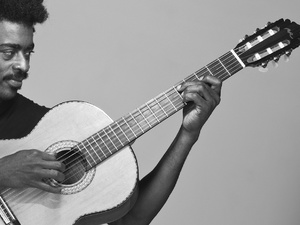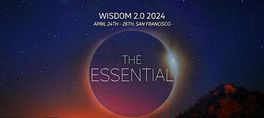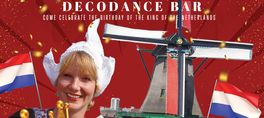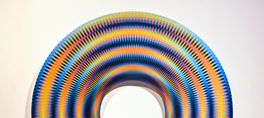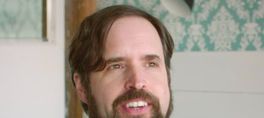Jorge Mário da Silva was born in 1970 in Belford Roxo, in the Metropolitan Area of Rio de Janeiro, and from an early age he knew he wanted to be a musician. He worked several jobs from the age of 10 onwards, was a regular at balls and Samba gatherings in Rio, and started out young singing at clubs. He left home at 19 and lived on the streets for a few years, where he had his first contact with theater. Discovered by clarinet player Paulo Moura, he auditioned for a musical and his life changed entirely ever since.
Seu Jorge (a nickname given by drummer and friend Marcelo Yuka) made his first mark as a professional musician in 1998: as a member of band Farofa Carioca, he released the album Moro no Brasil in Portugal, Japan and Brazil.
In 2001 he released his first solo album, Samba Esporte Fino, produced by Mário Caldato and Seu Jorge, and mixed and mastered in Los Angeles by Mário Caldato. In the following year he co-wrote the song Tem espaço na Van, with Ed Motta, and made a Partido Alto-style Samba project named Caatinga de Swing, performing in a night club in the south side of Rio and at Skol Rio.
In 2003 he recorded the album CRU in Itaipava, featuring musical production by the French Jerome Pigeon, and in that same year he co-wrote, with singer Ana Carolina, the songs Beat da Beata and Não fale desse jeito, for her highly successful album, Estampado.
In 2004, in Rome, he shot the video for his song Tive Razão, featuring actors Willem Dafoe and Bill Murray, and directed by Mariana Jorge. Next, he released a DVD entitled MTV Apresenta Seu Jorge (MTV Presents Seu Jorge) and co-wrote the track E depois, with the musician BID, for the Bambas e biritas Vol. 1 album.
He won the APCA Prize [Sao Paulo Art Critics Association] for best singer of the year two years running (2003 and 2004).
In September 2004 he released his CRU album in France (through the Naïve label), and in England, winning five stars from specialized French and English critics, rave editorials in Rolling Stone, Elle France, Vogue France, and making live appearances in TV shows. He was acclaimed by European audiences and critics as a major new representative of Brazilian music. He was invited by BBC to sing alongside the Black Eye Peas and the Foo Fighters in the famous Jools Holland show, to which he returned a few years later. He played a concert to mark the release of DVD The Life Aquatic. Seu Jorge also played a show at the Place de la Bastille, in Paris – together with Gilberto Gil, Caetano Veloso, Lenine, Daniela Mercury and Jorge Benjor –, and the Montreux Jazz Festival, and went on an European tour.
In mid-2005 he released CRU in Japan, where he already had a massive following dating back to his Farofa Carioca days. Upon returning to Brazil, he recorded the album and DVD for the concert Seu Jorge & Ana Carolina - Live.
In September of that same year, he toured the main cities of the US supporting CRU, with sold out concerts in every venue. In early 2006, he made a Samba project at Na Mata Café, in São Paulo, in which he would perform Partido-Alto-style Sambas only, every Sundays, alongside a circle of Samba players from Rio and guests.
During the carnival of 2006 he shot a documentary on his life for BBC London, which aired on the South Bank Show and later in Brazil, the United States, and Europe. In April, he opened concerts for Cape Verdean singer Cesária Évora in New York, Boston and Washington, and in May Seu Jorge received Gilles Peterson and CNN at his home to shoot a concert which was shown worldwide. In June and July, he toured the US and Canada, playing 21 live shows in 29 days, including the closing of the Brazilian Film Festival of Miami; the Bonnaroo Festival in Manchester; the Stern Grove Festival in San Francisco; the Coastal Jazz Festival in Vancouver; the Summerstage Festival at New York Central Park; the Montreal Jazz Festival; the Quebec City Summer Festival, among others, receiving acclaim from American audiences and critics alike, which gave him extra stamina to extend the tour to the United Kingdom and Portugal.
In late 2006 he focused on recording and producing América Brasil O Disco, after which he went on a two-year tour of Brazil and other countries. In January 2009, he shot América Brasil O DVD.
In July 2010 he released the album Seu Jorge & Almaz on US label Now Again. The project was born in 2008 as he was invited to sing in a song for the soundtrack of Linha de Passe, a film by Walter Salles and Daniela Thomas. Out of the meeting with musicians Lúcio Maia, Pupillo and Antônio Pinto, there emerged a strong friendship and the desire to record an album. Twelve versions of songs picked by them were recorded right away, but the album was only released two years later due to the schedules of those involved. Mid-2010 saw a 16-date tour of the main US cities, met with huge success and acclaim.
In 2011 he released the album Músicas para Churrasco Vol. 1, and on November 20, the National Black Awareness Day in Brazil, he recorded a DVD, released one year later in the same date.
Seu Jorge defines himself as a popular singer and songwriter who appreciates myriad musical genres, but whose roots lie in Samba: Samba is our truth, our particularity, our gold medal, our bastion, our Brazilian flag.
IN THE MOVIES
A musician from head to toe, a born singer, songwriter, instrument player and producer, Seu Jorge also features in films as an actor and score composer. He wrote music for the soundtracks of feature films Amores Possíveis, by Sandra Werneck, A Partilha, by Daniel Filho, and others.
As an actor, he debuted in Mãe Gentil - Folias Guanabaras, by choreographer Ivaldo Bertazzo, and in the movie Moro no Brasil (I Live in Brazil), by Mika Kaurismäki, from Finland. His acting on Cidade de Deus (City of God), a film made in 2002 in which he played Mané Galinha, won him international recognition.
In 2003 he was invited to feature in the film The Life Aquatic with Steve Zissou, directed by Wes Anderson, after a referral by Walter Salles and Fernando Meirelles. In addition to the acting, he recorded 13 Portuguese versions of David Bowie songs for the film, including one original song for the film: Team Zissou. These tracks resulted in the album The Life Aquatic - Studio sessions featuring Seu Jorge.
In 2004, immediately after the recording of the MTV Apresenta DVD, he featured along with Fernanda Montenegro and Fernanda Torres in the film Casa de Areia, directed by Andrucha Waddington.
In 2006, he participated in 3 productions: feature film Elipsis, by the director and producer Eduardo Arias (Venezuela), in which he played a powerful drug dealer named Coyote; he featured alongside Selton Mello in the short film Tarantino´s Mind, by the Rio-based director duo 300ML; and in September he spent ten days in New York shooting a short film as part of visual artist Doug Aitken’s Sleepwalkers project, shown on the walls of the MOMA in New York.
In early 2007 he was in feature film The Escapist, directed by Rupert Wyatt, alongside renowned actors such as Brian Cox, Joseph Fiennes, Dominic Cooper and Liam Cunningham. In April of that same year he featured in the film Carmo, a Brazilian, Spanish and Czech co-production shot in Corumbá, in the state of Mato Grosso, Brazil.
In April 2009 he shot Reis e Ratos, by director Mauro Lima, released in 2012. In the film, Seu Jorge plays a sailor, for which he had to change his look and cut his hair. (click here to watch the trailer)
In 2010, he shot Tropa de Elite 2 - O inimigo agora é outro, in which he played Beirada, a leader and drug trafficker who operates out of Bangu1 prison.
In 2012 was part of the casting on Bruno Mazzeo's film E aí, Comeu?.
show less
Seu Jorge (a nickname given by drummer and friend Marcelo Yuka) made his first mark as a professional musician in 1998: as a member of band Farofa Carioca, he released the album Moro no Brasil in Portugal, Japan and Brazil.
In 2001 he released his first solo album, Samba Esporte Fino, produced by Mário Caldato and Seu Jorge, and mixed and mastered in Los Angeles by Mário Caldato. In the following year he co-wrote the song Tem espaço na Van, with Ed Motta, and made a Partido Alto-style Samba project named Caatinga de Swing, performing in a night club in the south side of Rio and at Skol Rio.
In 2003 he recorded the album CRU in Itaipava, featuring musical production by the French Jerome Pigeon, and in that same year he co-wrote, with singer Ana Carolina, the songs Beat da Beata and Não fale desse jeito, for her highly successful album, Estampado.
In 2004, in Rome, he shot the video for his song Tive Razão, featuring actors Willem Dafoe and Bill Murray, and directed by Mariana Jorge. Next, he released a DVD entitled MTV Apresenta Seu Jorge (MTV Presents Seu Jorge) and co-wrote the track E depois, with the musician BID, for the Bambas e biritas Vol. 1 album.
He won the APCA Prize [Sao Paulo Art Critics Association] for best singer of the year two years running (2003 and 2004).
In September 2004 he released his CRU album in France (through the Naïve label), and in England, winning five stars from specialized French and English critics, rave editorials in Rolling Stone, Elle France, Vogue France, and making live appearances in TV shows. He was acclaimed by European audiences and critics as a major new representative of Brazilian music. He was invited by BBC to sing alongside the Black Eye Peas and the Foo Fighters in the famous Jools Holland show, to which he returned a few years later. He played a concert to mark the release of DVD The Life Aquatic. Seu Jorge also played a show at the Place de la Bastille, in Paris – together with Gilberto Gil, Caetano Veloso, Lenine, Daniela Mercury and Jorge Benjor –, and the Montreux Jazz Festival, and went on an European tour.
In mid-2005 he released CRU in Japan, where he already had a massive following dating back to his Farofa Carioca days. Upon returning to Brazil, he recorded the album and DVD for the concert Seu Jorge & Ana Carolina - Live.
In September of that same year, he toured the main cities of the US supporting CRU, with sold out concerts in every venue. In early 2006, he made a Samba project at Na Mata Café, in São Paulo, in which he would perform Partido-Alto-style Sambas only, every Sundays, alongside a circle of Samba players from Rio and guests.
During the carnival of 2006 he shot a documentary on his life for BBC London, which aired on the South Bank Show and later in Brazil, the United States, and Europe. In April, he opened concerts for Cape Verdean singer Cesária Évora in New York, Boston and Washington, and in May Seu Jorge received Gilles Peterson and CNN at his home to shoot a concert which was shown worldwide. In June and July, he toured the US and Canada, playing 21 live shows in 29 days, including the closing of the Brazilian Film Festival of Miami; the Bonnaroo Festival in Manchester; the Stern Grove Festival in San Francisco; the Coastal Jazz Festival in Vancouver; the Summerstage Festival at New York Central Park; the Montreal Jazz Festival; the Quebec City Summer Festival, among others, receiving acclaim from American audiences and critics alike, which gave him extra stamina to extend the tour to the United Kingdom and Portugal.
In late 2006 he focused on recording and producing América Brasil O Disco, after which he went on a two-year tour of Brazil and other countries. In January 2009, he shot América Brasil O DVD.
In July 2010 he released the album Seu Jorge & Almaz on US label Now Again. The project was born in 2008 as he was invited to sing in a song for the soundtrack of Linha de Passe, a film by Walter Salles and Daniela Thomas. Out of the meeting with musicians Lúcio Maia, Pupillo and Antônio Pinto, there emerged a strong friendship and the desire to record an album. Twelve versions of songs picked by them were recorded right away, but the album was only released two years later due to the schedules of those involved. Mid-2010 saw a 16-date tour of the main US cities, met with huge success and acclaim.
In 2011 he released the album Músicas para Churrasco Vol. 1, and on November 20, the National Black Awareness Day in Brazil, he recorded a DVD, released one year later in the same date.
Seu Jorge defines himself as a popular singer and songwriter who appreciates myriad musical genres, but whose roots lie in Samba: Samba is our truth, our particularity, our gold medal, our bastion, our Brazilian flag.
IN THE MOVIES
A musician from head to toe, a born singer, songwriter, instrument player and producer, Seu Jorge also features in films as an actor and score composer. He wrote music for the soundtracks of feature films Amores Possíveis, by Sandra Werneck, A Partilha, by Daniel Filho, and others.
As an actor, he debuted in Mãe Gentil - Folias Guanabaras, by choreographer Ivaldo Bertazzo, and in the movie Moro no Brasil (I Live in Brazil), by Mika Kaurismäki, from Finland. His acting on Cidade de Deus (City of God), a film made in 2002 in which he played Mané Galinha, won him international recognition.
In 2003 he was invited to feature in the film The Life Aquatic with Steve Zissou, directed by Wes Anderson, after a referral by Walter Salles and Fernando Meirelles. In addition to the acting, he recorded 13 Portuguese versions of David Bowie songs for the film, including one original song for the film: Team Zissou. These tracks resulted in the album The Life Aquatic - Studio sessions featuring Seu Jorge.
In 2004, immediately after the recording of the MTV Apresenta DVD, he featured along with Fernanda Montenegro and Fernanda Torres in the film Casa de Areia, directed by Andrucha Waddington.
In 2006, he participated in 3 productions: feature film Elipsis, by the director and producer Eduardo Arias (Venezuela), in which he played a powerful drug dealer named Coyote; he featured alongside Selton Mello in the short film Tarantino´s Mind, by the Rio-based director duo 300ML; and in September he spent ten days in New York shooting a short film as part of visual artist Doug Aitken’s Sleepwalkers project, shown on the walls of the MOMA in New York.
In early 2007 he was in feature film The Escapist, directed by Rupert Wyatt, alongside renowned actors such as Brian Cox, Joseph Fiennes, Dominic Cooper and Liam Cunningham. In April of that same year he featured in the film Carmo, a Brazilian, Spanish and Czech co-production shot in Corumbá, in the state of Mato Grosso, Brazil.
In April 2009 he shot Reis e Ratos, by director Mauro Lima, released in 2012. In the film, Seu Jorge plays a sailor, for which he had to change his look and cut his hair. (click here to watch the trailer)
In 2010, he shot Tropa de Elite 2 - O inimigo agora é outro, in which he played Beirada, a leader and drug trafficker who operates out of Bangu1 prison.
In 2012 was part of the casting on Bruno Mazzeo's film E aí, Comeu?.
Jorge Mário da Silva was born in 1970 in Belford Roxo, in the Metropolitan Area of Rio de Janeiro, and from an early age he knew he wanted to be a musician. He worked several jobs from the age of 10 onwards, was a regular at balls and Samba gatherings in Rio, and started out young singing at clubs. He left home at 19 and lived on the streets for a few years, where he had his first contact with theater. Discovered by clarinet player Paulo Moura, he auditioned for a musical and his life changed entirely ever since.
Seu Jorge (a nickname given by drummer and friend Marcelo Yuka) made his first mark as a professional musician in 1998: as a member of band Farofa Carioca, he released the album Moro no Brasil in Portugal, Japan and Brazil.
In 2001 he released his first solo album, Samba Esporte Fino, produced by Mário Caldato and Seu Jorge, and mixed and mastered in Los Angeles by Mário Caldato. In the following year he co-wrote the song Tem espaço na Van, with Ed Motta, and made a Partido Alto-style Samba project named Caatinga de Swing, performing in a night club in the south side of Rio and at Skol Rio.
In 2003 he recorded the album CRU in Itaipava, featuring musical production by the French Jerome Pigeon, and in that same year he co-wrote, with singer Ana Carolina, the songs Beat da Beata and Não fale desse jeito, for her highly successful album, Estampado.
In 2004, in Rome, he shot the video for his song Tive Razão, featuring actors Willem Dafoe and Bill Murray, and directed by Mariana Jorge. Next, he released a DVD entitled MTV Apresenta Seu Jorge (MTV Presents Seu Jorge) and co-wrote the track E depois, with the musician BID, for the Bambas e biritas Vol. 1 album.
He won the APCA Prize [Sao Paulo Art Critics Association] for best singer of the year two years running (2003 and 2004).
In September 2004 he released his CRU album in France (through the Naïve label), and in England, winning five stars from specialized French and English critics, rave editorials in Rolling Stone, Elle France, Vogue France, and making live appearances in TV shows. He was acclaimed by European audiences and critics as a major new representative of Brazilian music. He was invited by BBC to sing alongside the Black Eye Peas and the Foo Fighters in the famous Jools Holland show, to which he returned a few years later. He played a concert to mark the release of DVD The Life Aquatic. Seu Jorge also played a show at the Place de la Bastille, in Paris – together with Gilberto Gil, Caetano Veloso, Lenine, Daniela Mercury and Jorge Benjor –, and the Montreux Jazz Festival, and went on an European tour.
In mid-2005 he released CRU in Japan, where he already had a massive following dating back to his Farofa Carioca days. Upon returning to Brazil, he recorded the album and DVD for the concert Seu Jorge & Ana Carolina - Live.
In September of that same year, he toured the main cities of the US supporting CRU, with sold out concerts in every venue. In early 2006, he made a Samba project at Na Mata Café, in São Paulo, in which he would perform Partido-Alto-style Sambas only, every Sundays, alongside a circle of Samba players from Rio and guests.
During the carnival of 2006 he shot a documentary on his life for BBC London, which aired on the South Bank Show and later in Brazil, the United States, and Europe. In April, he opened concerts for Cape Verdean singer Cesária Évora in New York, Boston and Washington, and in May Seu Jorge received Gilles Peterson and CNN at his home to shoot a concert which was shown worldwide. In June and July, he toured the US and Canada, playing 21 live shows in 29 days, including the closing of the Brazilian Film Festival of Miami; the Bonnaroo Festival in Manchester; the Stern Grove Festival in San Francisco; the Coastal Jazz Festival in Vancouver; the Summerstage Festival at New York Central Park; the Montreal Jazz Festival; the Quebec City Summer Festival, among others, receiving acclaim from American audiences and critics alike, which gave him extra stamina to extend the tour to the United Kingdom and Portugal.
In late 2006 he focused on recording and producing América Brasil O Disco, after which he went on a two-year tour of Brazil and other countries. In January 2009, he shot América Brasil O DVD.
In July 2010 he released the album Seu Jorge & Almaz on US label Now Again. The project was born in 2008 as he was invited to sing in a song for the soundtrack of Linha de Passe, a film by Walter Salles and Daniela Thomas. Out of the meeting with musicians Lúcio Maia, Pupillo and Antônio Pinto, there emerged a strong friendship and the desire to record an album. Twelve versions of songs picked by them were recorded right away, but the album was only released two years later due to the schedules of those involved. Mid-2010 saw a 16-date tour of the main US cities, met with huge success and acclaim.
In 2011 he released the album Músicas para Churrasco Vol. 1, and on November 20, the National Black Awareness Day in Brazil, he recorded a DVD, released one year later in the same date.
Seu Jorge defines himself as a popular singer and songwriter who appreciates myriad musical genres, but whose roots lie in Samba: Samba is our truth, our particularity, our gold medal, our bastion, our Brazilian flag.
IN THE MOVIES
A musician from head to toe, a born singer, songwriter, instrument player and producer, Seu Jorge also features in films as an actor and score composer. He wrote music for the soundtracks of feature films Amores Possíveis, by Sandra Werneck, A Partilha, by Daniel Filho, and others.
As an actor, he debuted in Mãe Gentil - Folias Guanabaras, by choreographer Ivaldo Bertazzo, and in the movie Moro no Brasil (I Live in Brazil), by Mika Kaurismäki, from Finland. His acting on Cidade de Deus (City of God), a film made in 2002 in which he played Mané Galinha, won him international recognition.
In 2003 he was invited to feature in the film The Life Aquatic with Steve Zissou, directed by Wes Anderson, after a referral by Walter Salles and Fernando Meirelles. In addition to the acting, he recorded 13 Portuguese versions of David Bowie songs for the film, including one original song for the film: Team Zissou. These tracks resulted in the album The Life Aquatic - Studio sessions featuring Seu Jorge.
In 2004, immediately after the recording of the MTV Apresenta DVD, he featured along with Fernanda Montenegro and Fernanda Torres in the film Casa de Areia, directed by Andrucha Waddington.
In 2006, he participated in 3 productions: feature film Elipsis, by the director and producer Eduardo Arias (Venezuela), in which he played a powerful drug dealer named Coyote; he featured alongside Selton Mello in the short film Tarantino´s Mind, by the Rio-based director duo 300ML; and in September he spent ten days in New York shooting a short film as part of visual artist Doug Aitken’s Sleepwalkers project, shown on the walls of the MOMA in New York.
In early 2007 he was in feature film The Escapist, directed by Rupert Wyatt, alongside renowned actors such as Brian Cox, Joseph Fiennes, Dominic Cooper and Liam Cunningham. In April of that same year he featured in the film Carmo, a Brazilian, Spanish and Czech co-production shot in Corumbá, in the state of Mato Grosso, Brazil.
In April 2009 he shot Reis e Ratos, by director Mauro Lima, released in 2012. In the film, Seu Jorge plays a sailor, for which he had to change his look and cut his hair. (click here to watch the trailer)
In 2010, he shot Tropa de Elite 2 - O inimigo agora é outro, in which he played Beirada, a leader and drug trafficker who operates out of Bangu1 prison.
In 2012 was part of the casting on Bruno Mazzeo's film E aí, Comeu?.
read more
Seu Jorge (a nickname given by drummer and friend Marcelo Yuka) made his first mark as a professional musician in 1998: as a member of band Farofa Carioca, he released the album Moro no Brasil in Portugal, Japan and Brazil.
In 2001 he released his first solo album, Samba Esporte Fino, produced by Mário Caldato and Seu Jorge, and mixed and mastered in Los Angeles by Mário Caldato. In the following year he co-wrote the song Tem espaço na Van, with Ed Motta, and made a Partido Alto-style Samba project named Caatinga de Swing, performing in a night club in the south side of Rio and at Skol Rio.
In 2003 he recorded the album CRU in Itaipava, featuring musical production by the French Jerome Pigeon, and in that same year he co-wrote, with singer Ana Carolina, the songs Beat da Beata and Não fale desse jeito, for her highly successful album, Estampado.
In 2004, in Rome, he shot the video for his song Tive Razão, featuring actors Willem Dafoe and Bill Murray, and directed by Mariana Jorge. Next, he released a DVD entitled MTV Apresenta Seu Jorge (MTV Presents Seu Jorge) and co-wrote the track E depois, with the musician BID, for the Bambas e biritas Vol. 1 album.
He won the APCA Prize [Sao Paulo Art Critics Association] for best singer of the year two years running (2003 and 2004).
In September 2004 he released his CRU album in France (through the Naïve label), and in England, winning five stars from specialized French and English critics, rave editorials in Rolling Stone, Elle France, Vogue France, and making live appearances in TV shows. He was acclaimed by European audiences and critics as a major new representative of Brazilian music. He was invited by BBC to sing alongside the Black Eye Peas and the Foo Fighters in the famous Jools Holland show, to which he returned a few years later. He played a concert to mark the release of DVD The Life Aquatic. Seu Jorge also played a show at the Place de la Bastille, in Paris – together with Gilberto Gil, Caetano Veloso, Lenine, Daniela Mercury and Jorge Benjor –, and the Montreux Jazz Festival, and went on an European tour.
In mid-2005 he released CRU in Japan, where he already had a massive following dating back to his Farofa Carioca days. Upon returning to Brazil, he recorded the album and DVD for the concert Seu Jorge & Ana Carolina - Live.
In September of that same year, he toured the main cities of the US supporting CRU, with sold out concerts in every venue. In early 2006, he made a Samba project at Na Mata Café, in São Paulo, in which he would perform Partido-Alto-style Sambas only, every Sundays, alongside a circle of Samba players from Rio and guests.
During the carnival of 2006 he shot a documentary on his life for BBC London, which aired on the South Bank Show and later in Brazil, the United States, and Europe. In April, he opened concerts for Cape Verdean singer Cesária Évora in New York, Boston and Washington, and in May Seu Jorge received Gilles Peterson and CNN at his home to shoot a concert which was shown worldwide. In June and July, he toured the US and Canada, playing 21 live shows in 29 days, including the closing of the Brazilian Film Festival of Miami; the Bonnaroo Festival in Manchester; the Stern Grove Festival in San Francisco; the Coastal Jazz Festival in Vancouver; the Summerstage Festival at New York Central Park; the Montreal Jazz Festival; the Quebec City Summer Festival, among others, receiving acclaim from American audiences and critics alike, which gave him extra stamina to extend the tour to the United Kingdom and Portugal.
In late 2006 he focused on recording and producing América Brasil O Disco, after which he went on a two-year tour of Brazil and other countries. In January 2009, he shot América Brasil O DVD.
In July 2010 he released the album Seu Jorge & Almaz on US label Now Again. The project was born in 2008 as he was invited to sing in a song for the soundtrack of Linha de Passe, a film by Walter Salles and Daniela Thomas. Out of the meeting with musicians Lúcio Maia, Pupillo and Antônio Pinto, there emerged a strong friendship and the desire to record an album. Twelve versions of songs picked by them were recorded right away, but the album was only released two years later due to the schedules of those involved. Mid-2010 saw a 16-date tour of the main US cities, met with huge success and acclaim.
In 2011 he released the album Músicas para Churrasco Vol. 1, and on November 20, the National Black Awareness Day in Brazil, he recorded a DVD, released one year later in the same date.
Seu Jorge defines himself as a popular singer and songwriter who appreciates myriad musical genres, but whose roots lie in Samba: Samba is our truth, our particularity, our gold medal, our bastion, our Brazilian flag.
IN THE MOVIES
A musician from head to toe, a born singer, songwriter, instrument player and producer, Seu Jorge also features in films as an actor and score composer. He wrote music for the soundtracks of feature films Amores Possíveis, by Sandra Werneck, A Partilha, by Daniel Filho, and others.
As an actor, he debuted in Mãe Gentil - Folias Guanabaras, by choreographer Ivaldo Bertazzo, and in the movie Moro no Brasil (I Live in Brazil), by Mika Kaurismäki, from Finland. His acting on Cidade de Deus (City of God), a film made in 2002 in which he played Mané Galinha, won him international recognition.
In 2003 he was invited to feature in the film The Life Aquatic with Steve Zissou, directed by Wes Anderson, after a referral by Walter Salles and Fernando Meirelles. In addition to the acting, he recorded 13 Portuguese versions of David Bowie songs for the film, including one original song for the film: Team Zissou. These tracks resulted in the album The Life Aquatic - Studio sessions featuring Seu Jorge.
In 2004, immediately after the recording of the MTV Apresenta DVD, he featured along with Fernanda Montenegro and Fernanda Torres in the film Casa de Areia, directed by Andrucha Waddington.
In 2006, he participated in 3 productions: feature film Elipsis, by the director and producer Eduardo Arias (Venezuela), in which he played a powerful drug dealer named Coyote; he featured alongside Selton Mello in the short film Tarantino´s Mind, by the Rio-based director duo 300ML; and in September he spent ten days in New York shooting a short film as part of visual artist Doug Aitken’s Sleepwalkers project, shown on the walls of the MOMA in New York.
In early 2007 he was in feature film The Escapist, directed by Rupert Wyatt, alongside renowned actors such as Brian Cox, Joseph Fiennes, Dominic Cooper and Liam Cunningham. In April of that same year he featured in the film Carmo, a Brazilian, Spanish and Czech co-production shot in Corumbá, in the state of Mato Grosso, Brazil.
In April 2009 he shot Reis e Ratos, by director Mauro Lima, released in 2012. In the film, Seu Jorge plays a sailor, for which he had to change his look and cut his hair. (click here to watch the trailer)
In 2010, he shot Tropa de Elite 2 - O inimigo agora é outro, in which he played Beirada, a leader and drug trafficker who operates out of Bangu1 prison.
In 2012 was part of the casting on Bruno Mazzeo's film E aí, Comeu?.
show less
Date/Times:
Bimbo's 365 Club
12 Upcoming Events
1025 Columbus Avenue, San Francisco, CA 94133
The Best Events
Every Week in Your Inbox
From Our Sponsors
UPCOMING EVENTS
Great suggestion! We'll be in touch.
Event reviewed successfully.
